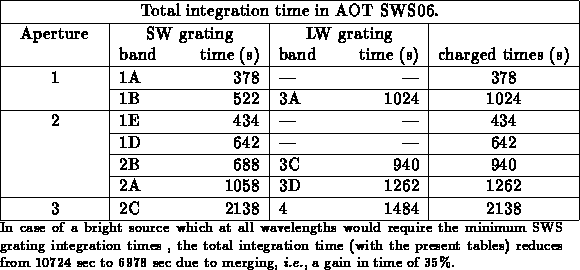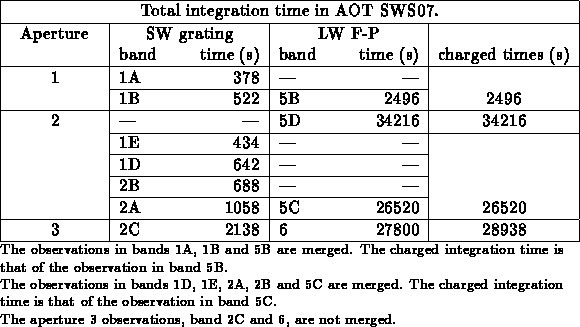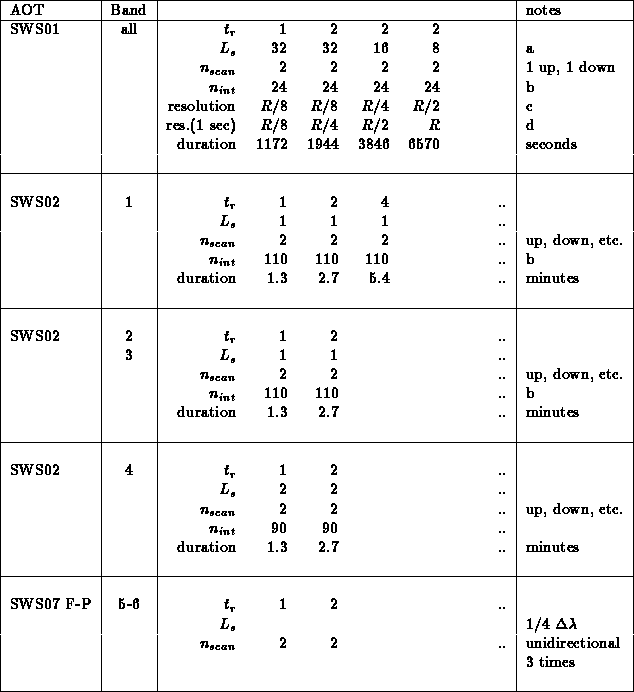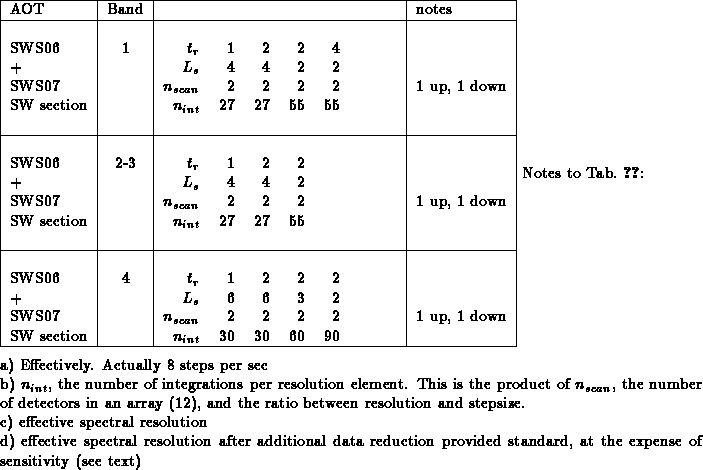Merging: simultaneous use of the SW and LW sections





Next: AOT SWS01: Low-Resolution
Up: AOT Cookbook
Previous: Recipes for the
As explained in section 3.3 and in
Fig.  (p.
(p.  )
it is possible to use both instrument sections simultaneously. In
practice this will always happen, even if the observer does not request
it .
)
it is possible to use both instrument sections simultaneously. In
practice this will always happen, even if the observer does not request
it .
The principle of merging allows that the observer, by a proper choice of
the wavelength ranges to be observed, obtains either free additional
observations or a better SNR of the desired wavelength range.
Knowledge of a few simple rules is sufficient to get optimum results
from an observing proposal. Rules and gains are different for AOT SWS07
with respect to AOTs SWS02 and 06.
For AOTs SWS02 and SWS06 it is important to propose per aperture the
same number of observations for both the LW and the SW sections.
The AOT logic selects LW-SW pairs on the basis of closely similar
integration times, and per pair the longest integration time is charged
to the observer. Thus the largest gain is made when the two individual
observations within a pair require nearly the same integration time.
It is up to the proposer to obtain this goal by a proper selection of
SNR and wavelength ranges. When the proposer does not (fully) use
the possibilities of merging, the AOT logic will optimize the proposal
by itself. This will be done in the following way:
- the requested SNR of the shortest measurement within each LW-SW
pair will be increased until the integration times become closely
similar.
- a measurement in either section, but within the same aperture, may be
repeated in order to form a LW-SW pair with a measurement in the other
section, which otherwise would not have been paired up.
For AOT SWS07 the observer should follow a different strategy. This strategy,
as implemented in the AOT logic, does not lead to a pure rise in efficiency,
because simultaneous use of SW-grating and LW-Fabry-Pérot will increase the
overheads and because merging is not possible through aperture
3. During the whole period in which the LW section is being used through
aperture 1 or 2 to make Fabry-Pérot scans, the SW section is available to
make grating scans through the same aperture. The practice of one to one
pairing of LW and SW observations, as explained above for AOTs SWS02 and SWS06,
does not apply to AOT SWS07. Instead, AOT SWS07 permits filling in of a
Fabry-Pérot scan with several grating scans up to a maximum equal to the
time needed to complete the Fabry-Pérot scan. Use of the grating during a
Fabry-Pérot scan involves a loss in efficiency for the Fabry-Pérot scan.
This loss amounts to an extra overhead of approximately 30 percent of the time
needed to complete all SW observations.
To illustrate both merging procedures, two examples of
full range SWS observations are considered below. In both cases a constant
flux density of 20 Jy and a requested SNR = 20 has been assumed.
The results for AOT SWS06 are tabulated in Table  ,
those for AOT SWS07 in Table
,
those for AOT SWS07 in Table  .
.

Table: Merging of observations in AOT SWS06. The integration time in the last
column shows which observation (SW or LW) determines the charged integration
time

Table: Merging of observations in AOT SWS07. The integration time in
the last column shows which observation determines the charged
integration time

Table: Possible combinations of reset time  , step size
, step size  in
scanner steps, and number of scans
in
scanner steps, and number of scans  for each of the SWS AOT's
for each of the SWS AOT's

Table: Continuation of possible combinations of reset time  , step size
, step size
 in scanner steps, and number of scans
in scanner steps, and number of scans  for each of the SWS
AOT's
for each of the SWS
AOT's





Next: AOT SWS01: Low-Resolution
Up: AOT Cookbook
Previous: Recipes for the
SWS Consortium
Tue Jul 30 15:56:20 MET DST 1996
 (p.
(p.  )
it is possible to use both instrument sections simultaneously. In
practice this will always happen, even if the observer does not request
it .
)
it is possible to use both instrument sections simultaneously. In
practice this will always happen, even if the observer does not request
it .







 , step size
, step size  in
scanner steps, and number of scans
in
scanner steps, and number of scans  for each of the SWS AOT's
for each of the SWS AOT's